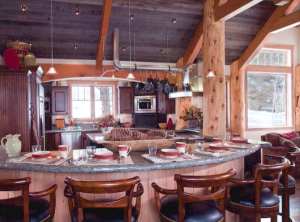Architectural Digest’s feature using one-sentence quotes by architects is a simple way to get inspiration for your own personal home.
Among some of the comments:
“The use of bold color in spaces that you only spend a short amount of time in, such as a foyer, breezeway or gallery, will make them more memorable and interesting.” —John Barman
Focus your energy and budget on the rooms where you and your family spend most of your time. The kitchen, family room and bathrooms should be as beautiful—if not more beautiful—than the living room or dining room. —Allan Greenberg
Allow for the “in-between” spaces to occur by employing light and shadow as a material. —David Jameson
And one of our favorite quotes, which we also have on our Web site, is from Henry David Thoreau: “It’s not what you look at what matters, it’s what you see.”

















